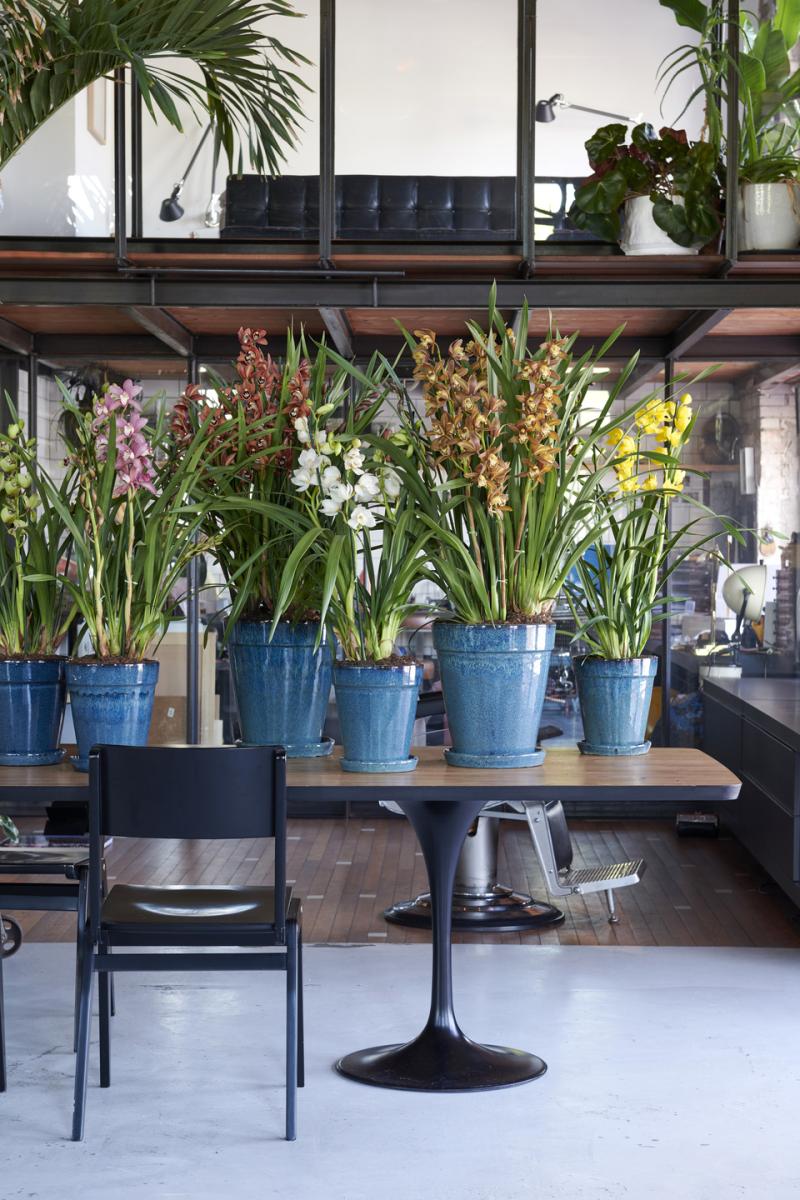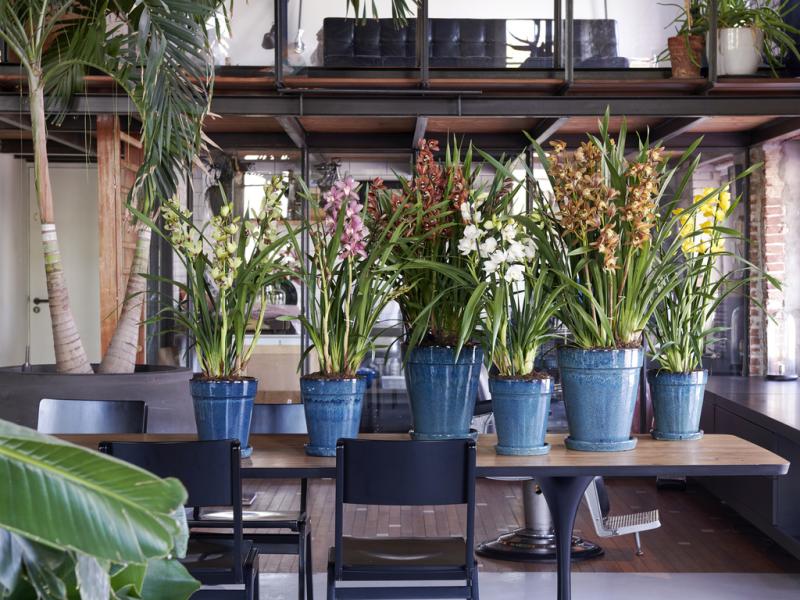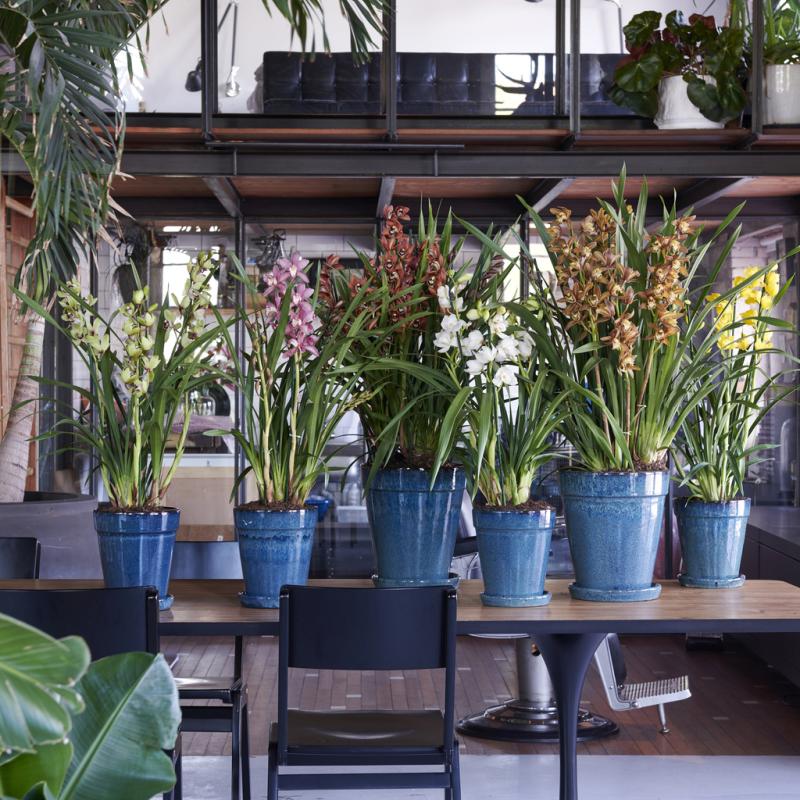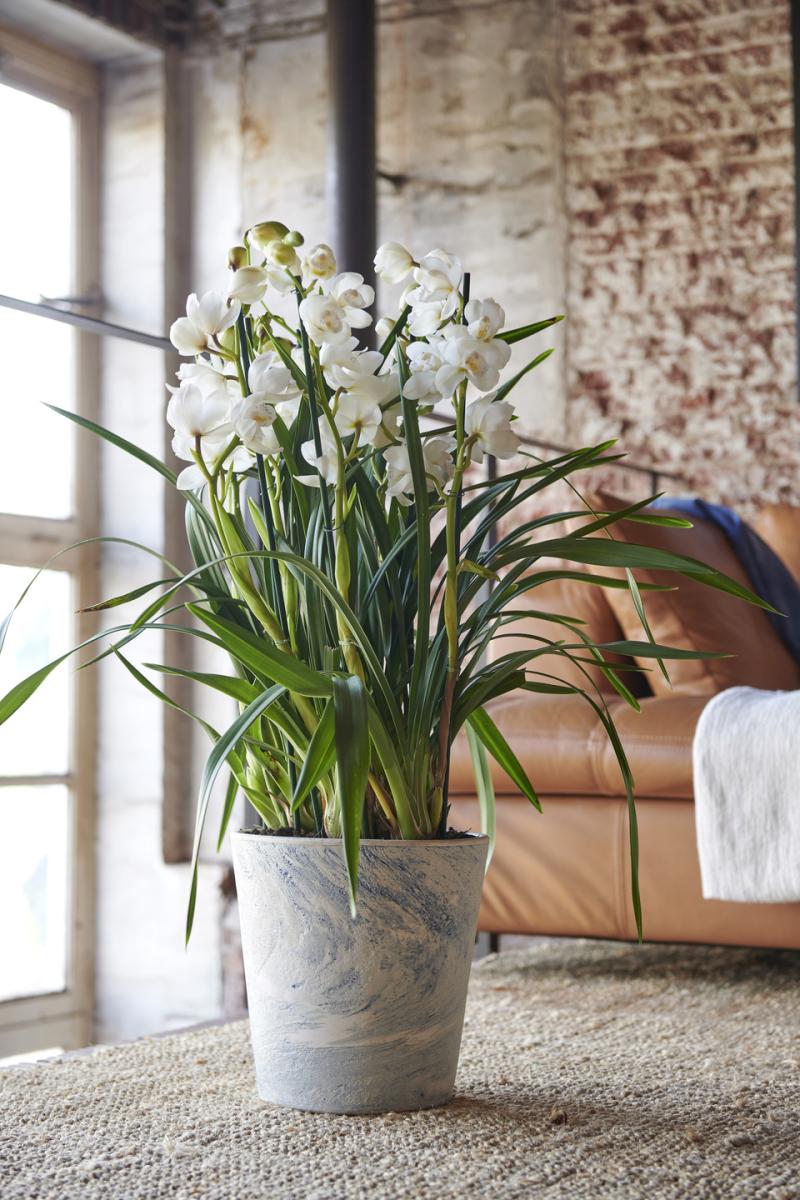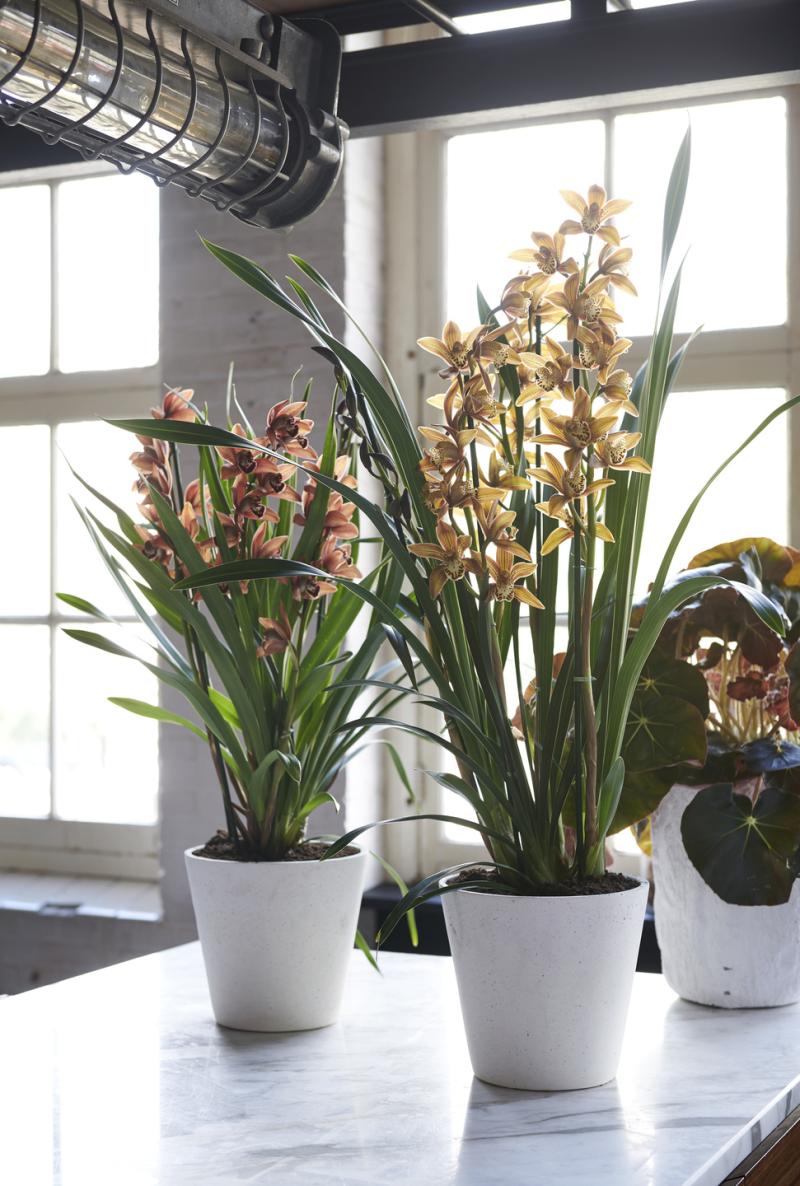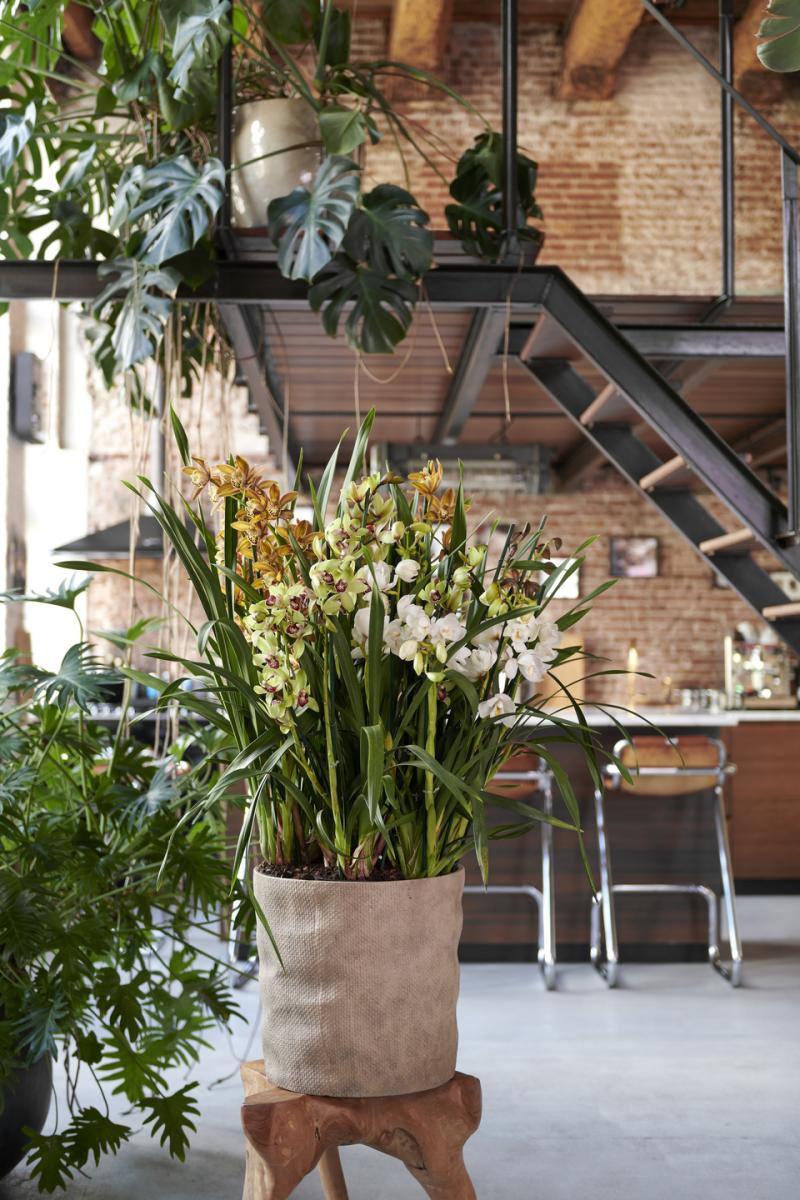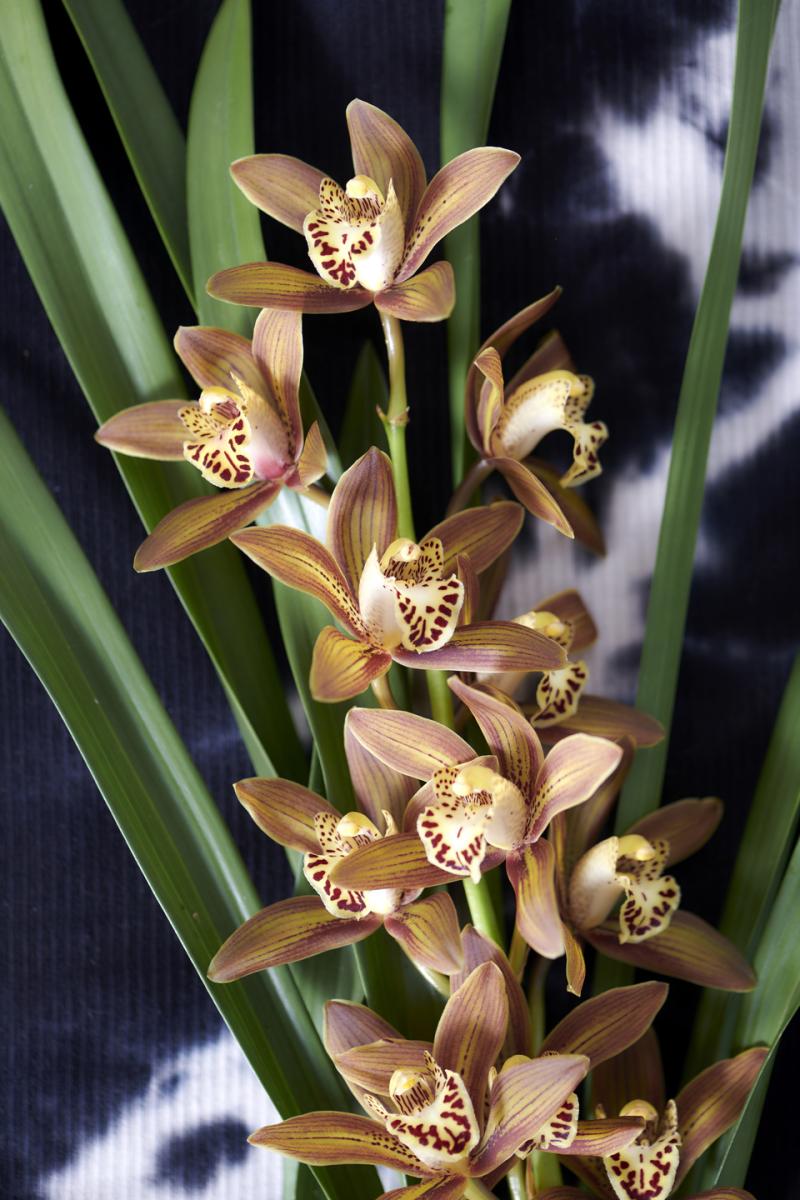Cymbidium: October Houseplant of the Month
The stem is concealed in a forest of soft green leaves. The flower stems quickly almost become top-heavy with flowers. Cymbidium flowers for weeks like a torch with red, purple, pink, orange, yellow, green or bicoloured flowers that sometimes have a light pleasant fragrance. Its imposing size and presence mean that the plant is known as the King of the Orchids. What’s notable is that unlike most orchids Cymbidium has no aerial roots but a root ball, and that it’s a desirable, strong seasonal plant that is only available in the autumn and winter.
Origin
Cymbidium looks tropical but is actually a cool character. This orchid is accustomed to surviving on the southern slopes of the Himalayas. Even on that rocky nutrient-poor soil, in cold nights and in bright light it’s able to produce its mysterious, elegant flowers. That makes it a very strong houseplant that can cope well with indoor conditions.
Cymbidium assorment
Cymbidium comes in many colours from creamy white to green and brown to red, yellow, pink and white.
The petals can be evenly coloured but can also have stripes or spots. The lip colour also varies, but the anther cap is always white. Cymbidium grows slowly: from a shoot to a flowering plant takes some five years on average. That makes it a very valuable, strong orchid. The houseplant is offered in minis and large-flowered varieties and as a hanging plant.
What to look for when buying Cymbidium
- Cymbidium is particularly offered when there’s an R are in the month, from September to March.
- Check the pot size, the number of flower stems per plant, the number of flowers and buds per stem and the colour and markings of the flowers and the lip colour. A few open buds are a good stage of ripeness for selling.
- Cymbidium should be able to stand independently in a pot that offers sufficient counterweight to the floral display above, which can easily get top-heavy.
- The orchid must be free of pests and diseases. Damaged flowers or leaves are usually the result of shipping or storage: the stems must thereby be tied upright or sleeved to prevent breakage.
- The flower can sometimes suffer from botrytis (= blight or grey mould). The plants can also suffer cold damage, particularly in winter. The flowers then become glazed or discoloured. Also check the plant for pests such as red spider mite, mealybug and scale insects.
Care tips for customers
- Cymbidium prefers to be in a spot with indirect light.
- Unlike many other orchids, Cymbidium has a real root ball. Immerse it once a fortnight, leave to stand for half an hour, and allow to drain.
- Plant food can be added to the immersion water once every three weeks.
- Once Cymbidium has finished flowering cut out the flower stem. Put the plant away in a light and cool spot and it’s quite likely that it will produce another stem.
Sales and display tips
Cymbidium is a spectacle plant which is perfect for launching the indoor season. The limited availability means that customers will discover it anew each year, and it's available in the autumn trend colours. Display them in various sizes and heights and stress the long flowering time. Customers really are buying something special with this orchid.
Cymbidium images
You can download and use the images below free of charge if you credit Thejoyofplants.co.uk.
Instagram: @thejoyofplants
Facebook: @thejoyofplants
Twitter: @thejoyofplants
For more information about the 2019 Houseplants of the Month selection, click here.
Cymbidium posters
You can download the poster using the link below:

